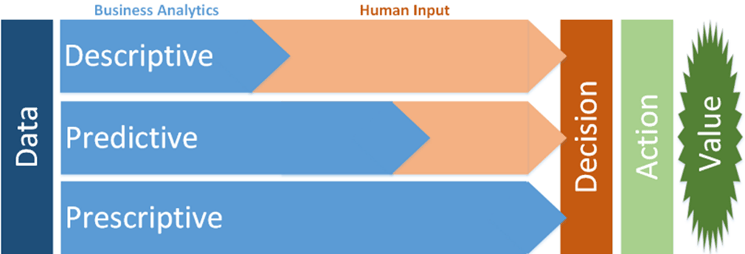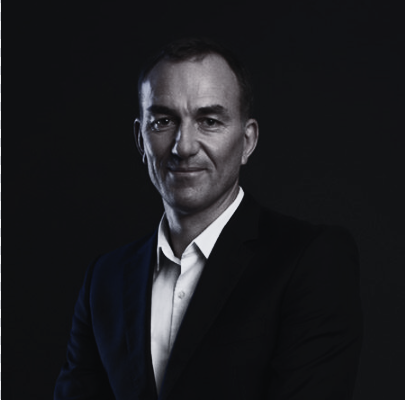 By Craig Larmer, Lead Consultant at Stellar
By Craig Larmer, Lead Consultant at Stellar
Being able to confidently predict the future is widely acknowledged as one of the most valuable outcomes of a business analytics initiative. If we could do that, then the business would be able to make better decisions.
The following model shows some of the stages of business analytics and where they fit into the decision-making process.

Traditionally most businesses focus their efforts on descriptive capability. This delivers reports and dashboards describing what has happened. You definitely need descriptive capability in place before moving on to the higher capabilities.
In recent years more businesses have been developing predictive capability. This is a lot more difficult but delivers much better value to the business.
The final stage of this is prescriptive where the business analytics application actually provides a decision to be acted upon.
The predictive and prescriptive capabilities require us to have a model that approximates what’s happening in reality, whereas the descriptive capability is simply recording what did happen in reality.
Easier said than done
 I’ve been reading The Signal and the Noise by Nate Silver. Nate came to fame with his successful predictions in the fields of sports and US politics. These are now published on his blog fivethirtyeight.com.
I’ve been reading The Signal and the Noise by Nate Silver. Nate came to fame with his successful predictions in the fields of sports and US politics. These are now published on his blog fivethirtyeight.com.
The book covers a range of topics explaining where humanity has attempted to predict the future – with various degrees of success. Nate covers topics such as the economy (hard to predict, and adaptive to predictions), weather (we’re getting better at this) and baseball (a game better suited to predictive models than some other sports).
Although the book is a few years old, it is still well worth a read if you’re at all interested in predictive analytics or thinking of implementing predictive analytics for business scenarios. It neatly covers some aspects of predictions through familiar examples.
For example, when commenting on the difficulty of predicting the performance of a complex system like the US economy, Nate points out that one organisation predicted only a 38% chance of a recession for 2007. It later turned out that the country was already IN a recession at the time of the prediction! One problem with predicting the economy is that it responds to predictions; if lots of people predict a downturn, then people will make different decisions and potentially nullify the prediction.
The topic of “Big Data” arises too, with one organisation commenting that they don’t need to model the system, just crunch the metrics being output. You’ll have to read the book to find out what Nate’s response is, but I can tell you it’s not overly kind.
Discovering insight through predictive techniques is definitely possible with the right approaches, tools and a thorough understanding of the problem. Stellar has proven that, with several successful engagements in this arena. But it remains difficult – even with recent advancements in tools and algorithms.
On a related note, Stellar have recently made available a new predictive service that we’re rolling out to clients. The service will accurately predict what’s going to happen tomorrow. It’s a complex model but has proved to be very accurate so far. The service still needs some performance tuning though as it takes about 2 days to calculate the results.
Let me know if you’re interested though! 🙂
Main photo: Scott Swigart on Flickr




